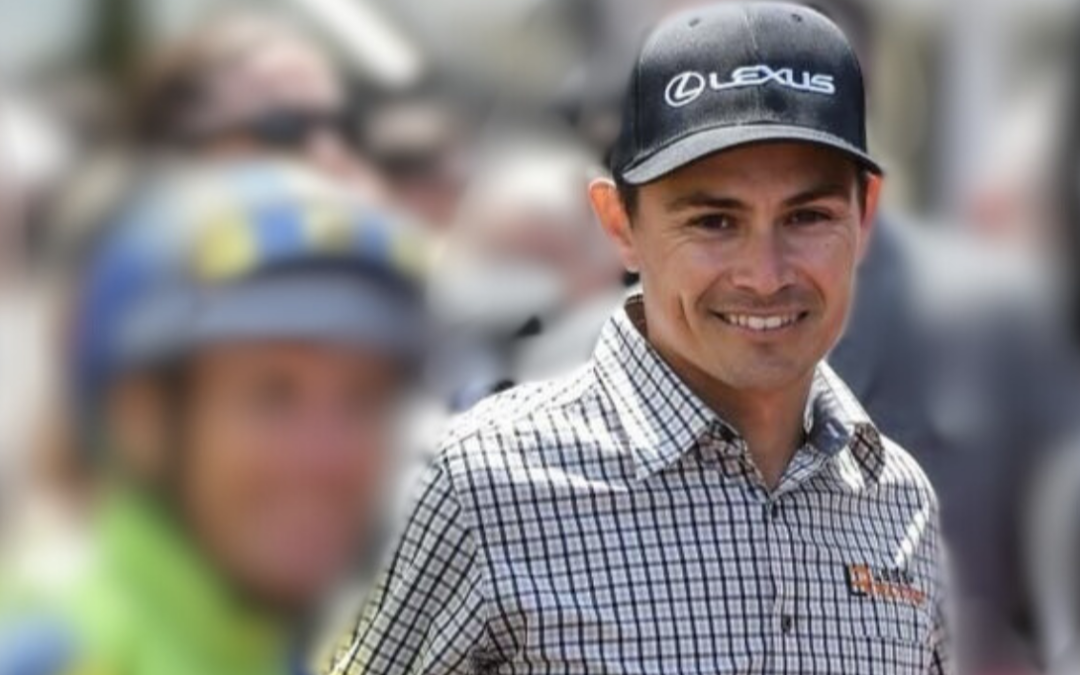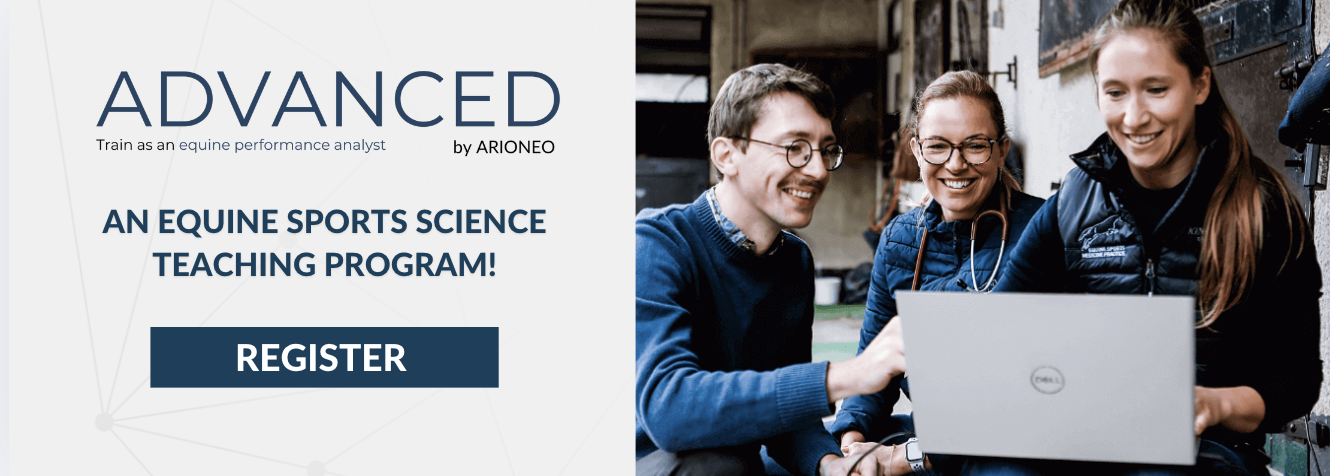Following the first session of our Advanced program, which trains people to analyze data on the performance of equine athletes in order to optimize their well-being and health, we had the opportunity to interview one of our alumni.
In this article, we introduce you to Jarrad Cook, data analyst for Kris Lees Racing in Australia. Jarrad shares his experience of the Advanced training and how he uses the Equimetre in his daily life.
Find out how the Advanced program has enabled him to refine his data analysis and optimize his decision-making process.
Could you briefly introduce yourself?
I’m Jarrad Cook, and I work for Kris Lees Racing at Newcastle in Australia. I also work part-time as an electrician at a coal export terminal. My background with horses began when I was very young; my grandfather was a racehorse trainer, and I was only two or three years old at the time. I believe that early exposure is what drove me to pursue a career in racing myself.
I started working with Kris Lees about 4.5 to 5 years ago, and my passion for the sport has only grown since then. This growing interest motivated me to take this course to deepen my knowledge about horses and find ways to enhance their performance.
How is your data sharing organized with Kris Lees?
I put the Equimetre on the horses in the morning and then retrieve the data. What I usually do, and what he prefers, is to send him a comparison of the horses that have worked that morning and review the analytics tab.
Essentially, I assess how each horse has performed compared to its previous gallops or workouts. I then write a flash analysis to inform him about the horse’s performance relative to that recent gallop and how its locomotive data is trending.
We’re currently only scratching the surface with this at Kris Lees Racing. However, as I become more confident with using the system and Kris becomes more familiar with it, we plan to delve into all the data points it can provide.
What was your motivation for enrolling in the Advanced training?
Our vet used to manage our Equimetre devices and handle their use on the horses. When Coline came to Lees Racing one morning, I saw her demonstrating how to put a device on a horse. I had always been interested and had read some of your white papers, understanding how the system worked, but I hadn’t had hands-on experience with it.
After Coline’s visit, Kris asked me to take over managing the Equimetre devices, likely due to my electrical background. He thought it would be best if I handled it and got it up and running, especially since the vet would no longer be involved in setting up the devices.
This arrangement has worked out well because the vet is very busy with all the horses. Now, we can put the devices on ourselves, upload and analyze the data, and involve the vet only if we encounter issues.
I saw the email about the Advanced program and decided to enroll to deepen my understanding of the system and how to analyze the data to maximize its benefits. Kris generously covered the course fees, and I’m grateful for that. We are now making the most of the system and using it as frequently as possible.
How did you manage your training regarding your organization with your daily routine?
I was quite fortunate. I only work with the horses in the mornings or attend race meetings, so I usually have some free time in the afternoon if I’m not at my other job. This allowed me to sit down and spend a few hours going through the material, attending live classes, or reviewing my notes.
I was really lucky to have that time available to dedicate to the course. I also have a very supportive family, which helped by looking after my two little boys, making it possible for me to complete the program.
What can a data analyst bring to a trainer?
I think the biggest benefit we’ve found is how the Equimetre data helps us correlate the riders’ feedback with the actual performance of the horse. Our riders will come back and describe how a horse felt or where they think it stands, and the data allows us to confirm or adjust that information. It’s been invaluable for matching the riders’ observations with the Equimetre data.
This has been particularly interesting for us. For example, riders have approached me saying that a horse didn’t perform as well as expected, and they had noticed it didn’t feel right. This alignment of feedback with data has been a standout aspect for us.
Additionally, the locomotor profile data has been useful for assessing the horses’ distances and potential. We’ve used this information to test if a horse could handle certain ground conditions, and it led to one of our horses winning three races in a row. That’s been a significant success for us.
What were your favorite modules?
I’ve found all the modules very interesting and have made a lot of notes that I will refer back to. One of the modules I plan to explore further is the analysis of intensity levels in their work, particularly how we can manage the amount of work done at each intensity level. Most of our recorded data has focused primarily on gallops, so it will be beneficial to apply this to our slow canter and pace work as well. This will help us determine if spending more time in these lower intensity zones could benefit the horses before their gallops.
As for my favorite module, they were all quite valuable. The Excel module was initially challenging for me, but I actually gained a lot from it. Although I hadn’t worked much with Excel before, I can now create some pretty useful graphs for Kris and the team, even if they’re still a long way from what you guys can produce.
What is the added value of the program in your role as a data analyst?
I suppose it gave me a holistic approach to understanding everything. It covered common pathologies, intensity zones, and we currently have a horse with poor recovery issues and the ability to pinpoint the issue using the EQUIMETRE data has been invaluable. This was covered in one of the modules during the course. It was a good way to consolidate all this information. The Advanced program is an effective way to learn everything in a short period, while still having access to our notes for reference.
What would be your best advice for a trainer who wants to start working with a data analyst?
I think the more data you have, the more you can compare and understand. Data gives you more power to assess where your horses are currently and how they compare to their previous preparation. I believe it’s definitely the way forward.
It’s true across all sports—look at the Olympics, for example. I’m sure a lot of sports science is involved in everything they do.
Would you recommend the Advanced training?
Oh yes, I would definitely recommend it. If you’re going to use data in your day-to-day work and rely on the Equimetre device, having access to an Arioneo data analyst for reference and questions is invaluable.
However, if you were to handle day-to-day analysis yourself without taking the course, I don’t think you’d have the necessary knowledge to understand what you’re looking for and how to interpret it.
Would you like to work with other trainers than Kris Lees?
For sure. I’d be open to working with other trainers. Right now, we have a lot of horses in training and only four Equimetre, which keeps me quite busy. However, in the future, I’d definitely like to collaborate with other trainers and expand my knowledge further.
Thank you, Jarrad, for sharing your journey with us. We look forward to seeing the continued success and advancements that you and all our alumni will bring to the field of equine sports science.
For those interested in learning more about the Advanced program and how it can benefit your career, please visit the Advanced webpage.
Contact:
📞 +61 400 466 822
📧 jarradcook88@gmail.com
Key Words: Arioneo Institute, advanced, program, training, equine data analyst, horse performance analyst, sport science horse, equine sport science, training program equine, equine learning, equine careers, horse career, equimetre, data analyst


